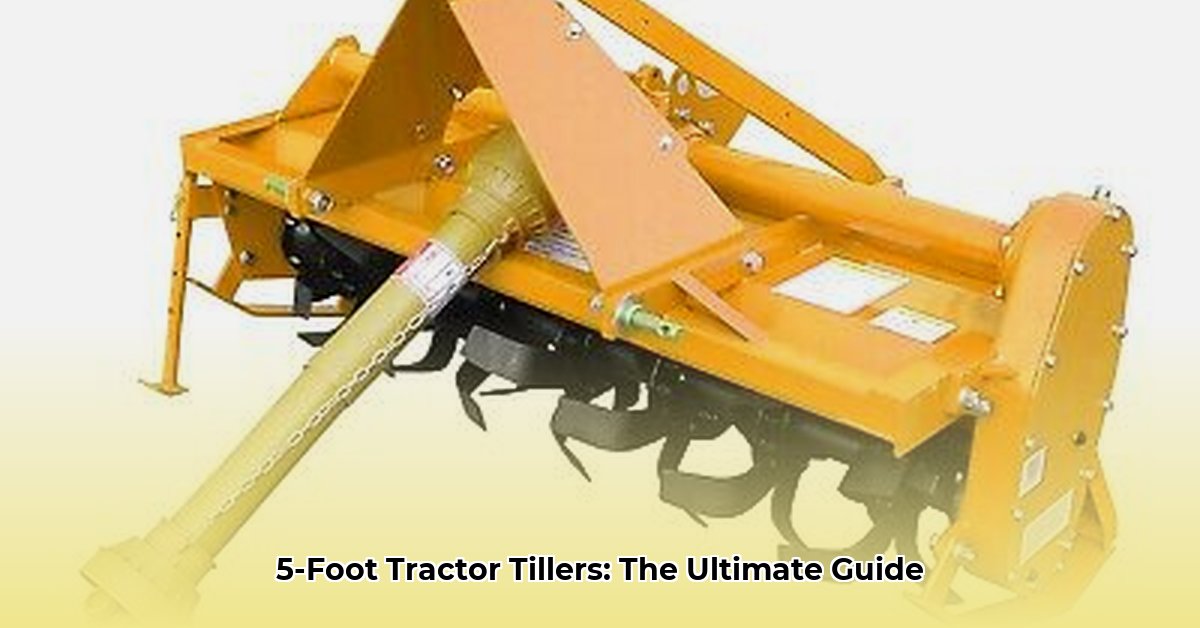
Choosing the right 5-foot tiller for your tractor is a crucial decision for any farmer, particularly those committed to sustainable agricultural practices. This guide compares popular brands like CountyLine and King Kutter, focusing on factors that impact both soil health and environmental sustainability. For more information on three-point tillers, check out this helpful resource: Three-Point Tillers. While readily available data on this specific intersection is limited, we'll examine what information is available and highlight areas needing further research.
Understanding the Need for Sustainable Tillage Practices
Sustainable agriculture demands a mindful approach to every aspect of farming, and tillage is no exception. Traditional tillage methods can lead to soil erosion, reduced carbon sequestration, and increased reliance on chemical inputs. A 5-foot tiller, while efficient for many operations, needs to be evaluated not just for its performance but also for its long-term environmental impact. Choosing a tiller that minimizes these negative effects is vital for maintaining soil health and promoting environmental stewardship. How can farmers balance the need for efficient tillage with the long-term health of their land?
CountyLine vs. King Kutter: A Comparative Analysis
CountyLine and King Kutter are frequently cited brands in the 5-foot tiller market. Both are widely available, offering convenience for many farmers. However, comprehensive data directly comparing their sustainability profiles remains surprisingly scarce. This lack of information makes it difficult to definitively rank these brands based on their environmental impact.
| Feature | CountyLine 5ft Tiller | King Kutter 5ft Tiller | Notes |
|---|---|---|---|
| Availability | Widely available at many farm supply stores | Widely available at many farm supply stores | Easy accessibility is a significant advantage for both brands. |
| Price | Prices vary; check multiple retailers | Prices vary; check multiple retailers | Price comparisons require checking multiple retailers for current pricing. |
| Detailed Specs | Limited publicly available information | Limited publicly available information | Manufacturers should provide more detailed specifications. |
| User Reviews | Few reviews focus on long-term sustainability | Few reviews focus on long-term sustainability | A significant data gap exists regarding long-term sustainability. |
Evaluating Sustainability in 5-Foot Tillers
Sustainable farming necessitates a holistic assessment of equipment, including fuel efficiency, material sourcing, durability, repairability, and impact on soil health. Unfortunately, detailed information on these aspects for 5-foot tillers is often lacking, creating a challenge for farmers seeking environmentally responsible options. What specific factors should be prioritized when evaluating the environmental impact of a tiller?
Key Sustainability Factors
- Fuel Efficiency: The impact of a tiller's fuel consumption on greenhouse gas emissions is significant. Manufacturers should provide precise data on fuel usage per acre. How can we incentivize the development of more fuel-efficient models?
- Materials and Manufacturing: The materials used, their sourcing, and the manufacturing process itself all affect the environmental footprint. Transparency regarding recycled content and sustainable manufacturing practices is crucial. What are the emerging trends in sustainable materials for agricultural equipment?
- Durability and Longevity: A longer-lasting tiller reduces the need for replacements, minimizing waste and associated environmental impact. What design features contribute to a tiller's longer lifespan?
- Repairability and Parts Availability: The ability to easily repair a tiller extends its useful life, reduces waste, and lowers the economic burden on the farmer. Easy access to replacement parts is also essential for extending a tiller's lifespan. How can manufacturers improve the repairability of their tillers?
- Impact on Soil Health: The tiller's effect on soil structure, aeration, and water infiltration is paramount for long-term soil health and sustainable farming. How can we refine tilling practices to enhance soil health, and how can tiller design contribute?
User Reviews and the Data Deficit
While user reviews can offer valuable insights, many lack the focus on long-term sustainability aspects needed for a comprehensive assessment. This information gap is a significant roadblock for farmers wishing to make informed, environmentally responsible decisions. The scarcity of data underscores the need for greater transparency from manufacturers and a more focused approach to data collection in user reviews. What steps can be taken to improve the data available to farmers?
The Path Forward: A Call for Collaboration
Addressing the sustainability challenges related to 5-foot tillers requires a collaborative effort among manufacturers, researchers, and farmers. Manufacturers need to prioritize transparency by providing detailed information on the environmental impact of their products. Researchers should conduct more comprehensive independent testing to fill the current data gaps. Farmers should actively seek out this information from manufacturers and share their own experiences to build a more complete picture. Only through collaborative action can we achieve a more sustainable future for agriculture.